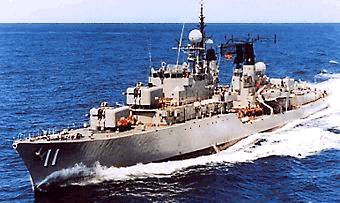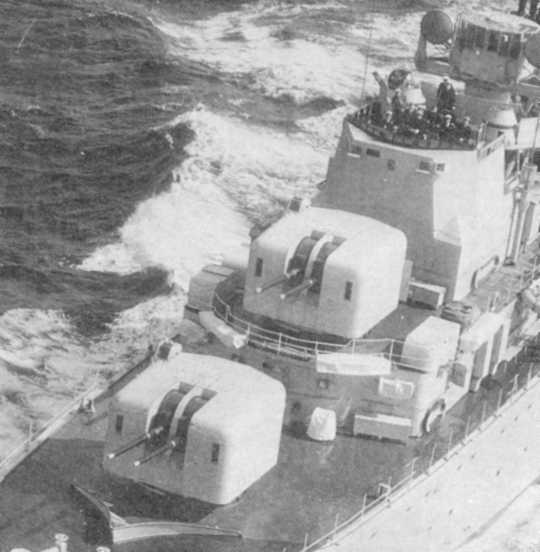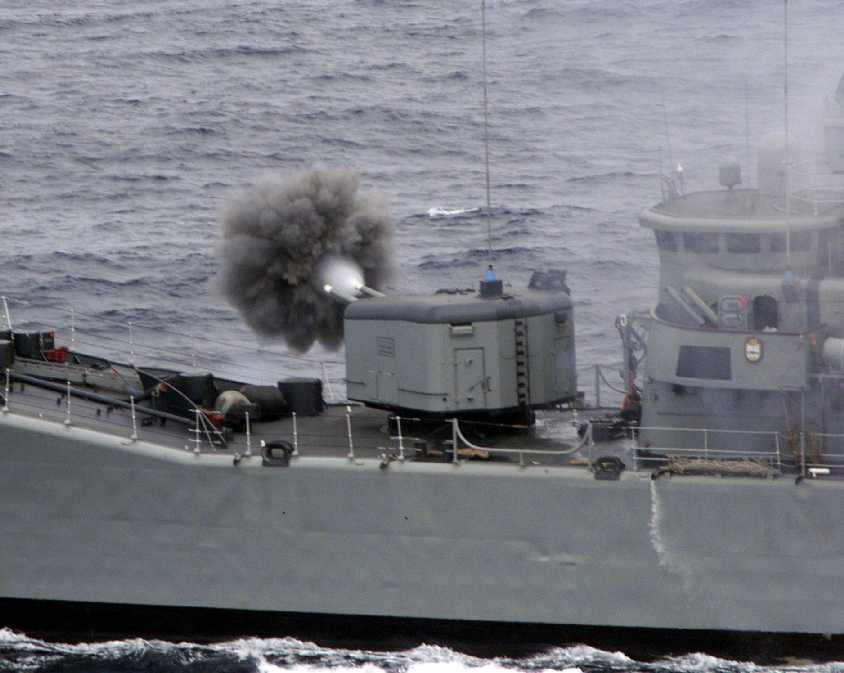|
The ramming mechanism proved to be overly complex and prone to faults. For this reason, the high rate of fire initially expected could not be realized in practice and most gun crews relied upon hand-loading in order to maintain a steady rate of fire. Despite this problem, these guns proved to be reliable in service and gave a good account of themselves during the Falklands War. Service introduction was on the Australian "Modified Battle" class destroyers Anzac and Tobruk. In Britain, these weapons were first used on the Daring class destroyers, about which was said: "At last the RN had a modern destroyer with a longitudinally framed, welded hull, efficient and compact machinery, AC electrics and an effective dual-purpose armament. These 'innovations' were introduced a decade later than in the USN" - D.K. Brown RCNC. Nomenclature note: In the 1950s the British weapon designation system changed from being per the gun itself to being per the mounting the gun was used in. At the same time, arabic numerals replaced roman numerals. Some confusion was created under this new system because older weapons were redesignated, even though the weapons and mountings themselves did not change. Under this new system, the combination of the "4.5-in Mark V gun" as used in the "Mark VI twin mounting" was redesignated as the "4.5-in Mark 6" gun mounting. As could be expected, these changes have led to much confusion as to what weapons were actually used on any particular ship. For this reason, at the top of this datapage I show both the original per-the-gun designation and, in parenthesis, the per-the-mounting redesignations. The "Mark 7" was the never-built mounting intended for the Malta class carriers which would have used the same Mark V gun barrel as did the Mark 6 mounting. It has been speculated that the Mark 7 mounting might also have been used on the Lion class battleships. This weapon had a loose barrel construction. The barrel was withdrawn to the rear and was held in place by retaining and locking plates attached to the breech ring. The breech block moved vertically, opened hydraulically and closed by spring operated racks. The breech ring was screwed and shrunk onto the jacket. About 300 guns were manufactured. All British 4.5" naval guns have an actual bore diameter of 4.45" (11.3 cm). |

RAN Vampire
|

HMS Daring off Malta in December 1953
|

Chilean Frigate Almirante Condell (PFG-06)
in 1999
|
| .
See 0751 |